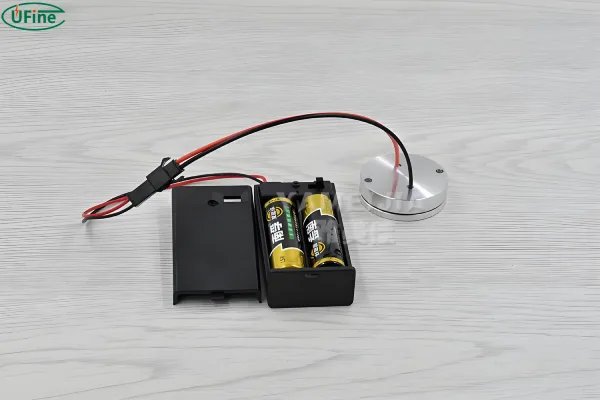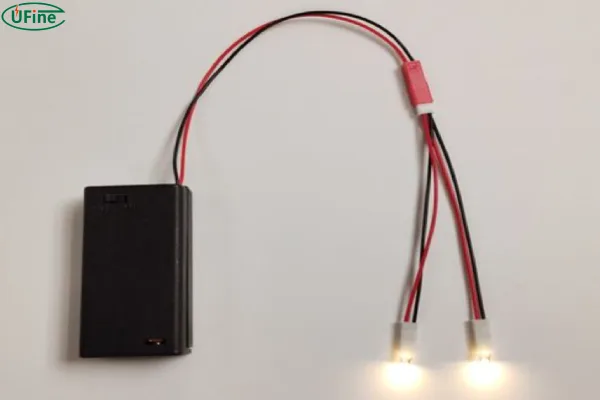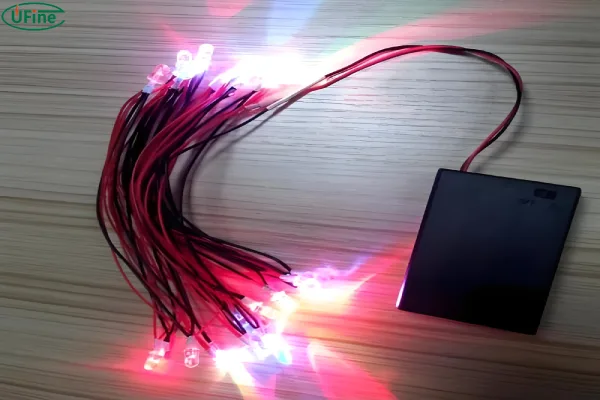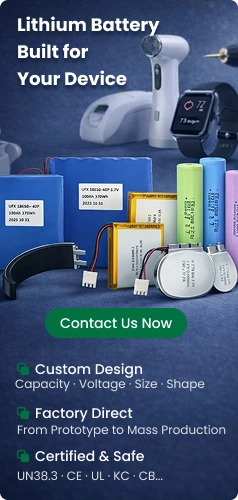
- Part 1. What batteries do LED use?
- Part 2. LED light battery voltage
- Part 3. Best batteries for LED lights: key parameters
- Part 4. Which type of LED battery is best?
- Part 5. How long does an LED light battery last?
- Part 6. How do I know which battery should I use with my LED light?
- Is your LED light compatible with the battery?
Part 1. What batteries do LED use?
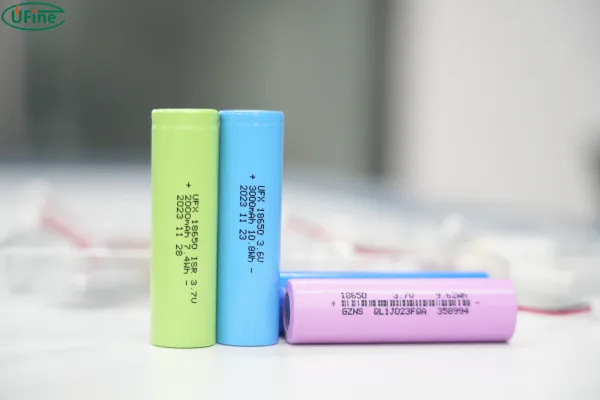
When it comes to powering our beloved LED light battery, not all batteries are created equal. Let’s break down the main contenders in the light battery arena:
1. Alkaline Light Batteries:
These are the workhorses of the battery world. You’ll find them in every corner store, ready to jump into action. They’re perfect for low-power LED applications, like remote controls or small flashlights. Here’s why they’re so popular:
- Affordable and widely available
- Decent shelf life when not in use
- No memory effect, so you can use them intermittently without worry
However, they’re not without drawbacks. They’re not rechargeable, which means more waste and higher long-term costs. Plus, their performance can drop in extreme temperatures.
2. Lithium-Ion (Li-ion) Light Batteries:
Now we’re talking high-tech! These batteries are the powerhouses behind many of our rechargeable devices. For LED lighting, they’re ideal for high-end portable lights or rechargeable LED lamps. Here’s what makes them shine:
- High energy density – more power in a smaller package
- Long lifespan – can be recharged hundreds of times
- Minimal self-discharge when not in use
On the flip side, they can be more expensive upfront, and they require special charging circuits to prevent overheating.
3. Nickel-Metal Hydride (NiMH) Light Batteries:
Think of these as the middle ground between alkaline and lithium-ion. They’re rechargeable, which is great for the environment and your wallet in the long run. They’re often used in medium-power LED lights like outdoor solar lamps. Let’s look at their pros:
- Rechargeable – can be used hundreds of times
- Higher capacity than alkaline batteries
- More environmentally friendly than disposable options
However, they do have a higher self-discharge rate than lithium-ion batteries, meaning they lose charge faster when not in use.
4. Lead-Acid Light Batteries:
These are the heavyweights of the battery world. While they’re not suitable for your average household LED light, they play a crucial role in large-scale LED systems. Think emergency lighting or off-grid solar setups. Here’s why they’re still in the game:
- Cost-effective for large-capacity needs
- Reliable and well-understood technology
- Can deliver high currents when needed
Part 2. LED light battery voltage
Voltage is like the water pressure in a pipe – it’s what pushes the electricity through your LED. Getting this right is crucial for optimal performance and longevity of your lights. Let’s break down the common voltage ranges:
1.2V to 1.5V:
This is the realm of single-cell batteries like AA or AAA. You’ll often find these voltages in:
- Small LED flashlights
- Battery-operated fairy lights
- LED tea lights
3V to 3.7V:
Moving up the voltage ladder, we find batteries often used in:
- Larger LED flashlights
- Some smartphone camera flashes
- Many types of LED bulbs for home use
6V to 12V:
- Now we’re getting into serious lighting territory. These voltages are common in:
Outdoor LED floodlights
- Car interior LED lighting
- Some types of LED strip lighting
It’s worth noting that many LED systems use a driver or controller to regulate the voltage from the battery to the exact needs of the LED. This helps protect the LED from voltage fluctuations and extends its lifespan.
Part 3. Best batteries for LED lights: key parameters
When you’re in the market for light batteries, there’s more to consider than just voltage. Let’s dive into the key parameters that can make or break your LED lighting experience:
-
Capacity:
Measured in milliamp-hours (mAh) or amp-hours (Ah), capacity is essentially how much charge the battery can hold. It’s like the size of your fuel tank. Higher numbers mean longer runtime, but also usually mean larger, heavier batteries. For example, a 2000mAh battery will last roughly twice as long as a 1000mAh battery in the same device. -
Discharge Rate:
This is how quickly the battery can deliver its power. It’s particularly important for high-drain LEDs like powerful flashlights. A battery with a high discharge rate can deliver more current, which is necessary for bright, high-power LEDs. -
Cycle Life:
For rechargeable batteries, this is the number of charge/discharge cycles before performance significantly drops. A battery with a higher cycle life will last longer before needing replacement, which is better for both your wallet and the environment. -
Self-Discharge Rate:
This is how quickly a battery loses its charge when not in use. It’s particularly important if you’re using your LED lights infrequently. NiMH batteries, for instance, have a higher self-discharge rate than Lithium-Ion batteries. -
Operating Temperature Range:
Batteries perform differently at different temperatures. If you’re using your LED lights outdoors, you’ll want batteries that can handle both hot summers and cold winters without significant performance loss. -
Size and Weight:
For portable LED lights, the physical characteristics of the battery matter. A smaller, lighter battery might be preferable even if it means slightly lower capacity. -
Safety Features:
Look for batteries with built-in protection against overcharging, over-discharging, and short circuits. These features can prevent damage to your LEDs and reduce the risk of battery-related accidents. -
Energy Density:
This is the amount of energy stored in a given space. Higher energy density means more power in a smaller package, which is great for portable LED lights.
Part 4. Which type of LED battery is best?
The million-dollar question! As with many things in life, there’s no one-size-fits-all answer. The best battery depends on your specific needs. Let’s break it down:
For Portability and High Performance:
Lithium-Ion batteries take the crown here. They’re lightweight, pack a lot of power, and can be recharged many times. They’re ideal for:
- High-end LED flashlights
- Portable LED work lights
- Rechargeable LED headlamps
For Everyday Use and Affordability:
Alkaline batteries are your go-to. They’re cheap, readily available, and work well for:
- Remote controls for LED light strips
- Battery-operated LED candles
- Low-power LED night lights
For Rechargeable Convenience and Decent Capacity:
NiMH batteries strike a good balance. They’re rechargeable, have good capacity, and are perfect for:
- Solar garden LED lights
- LED camping lanterns
- Wireless LED picture lights
For Large, Stationary Setups:
Lead-Acid batteries, while not glamorous, are hard to beat for:
- Emergency LED lighting systems
- Off-grid solar LED setups
- Large outdoor LED displays
Part 5. How long does an LED light battery last?
The lifespan of an LED light battery can vary widely depending on the type of battery, usage patterns, and environmental factors. Let’s break it down:
Alkaline Batteries:
- In low-drain LED devices (like remote controls): Can last several months to a year.
- In medium-drain devices (like small LED flashlights): Typically last from a few hours to several days of continuous use.
- Shelf life: Can last up to 10 years when stored properly.
Lithium-Ion Batteries:
- Cycle life: Often good for 300-500 full charge cycles, which can translate to several years of use.
- In high-drain LED devices: Can last anywhere from a few hours to several days, depending on capacity and usage.
- Shelf life: Can retain up to 80% of their charge after a year in storage.
NiMH Batteries:
- Cycle life: Typically good for 300-500 charge cycles.
- In medium-drain LED devices: Can last from several hours to a few days.
- Shelf life: Tend to self-discharge faster than other types, losing up to 20% of their charge per month when not in use.
Lead-Acid Batteries:
- Cycle life: Usually lasts for 200-300 cycles in deep cycle applications.
- In stationary LED systems: Can provide power for hours or even days, depending on capacity and load.
- Shelf life: Can last for years when properly maintained, but require regular charging when not in use.
Remember, these are general guidelines. Proper care and usage can significantly extend battery life. Avoid extreme temperatures, store batteries properly when not in use, and for rechargeable batteries, try to avoid completely draining them before recharging.
Part 6. How do I know which battery should I use with my LED light?
Choosing the right battery for your LED light depends on several factors. Here’s a breakdown to help you make the best choice:
1. Check the LED Light’s Specifications:
- Voltage: This is the most crucial factor. The battery’s voltage must match the LED light’s required voltage (e.g., 12V, 24V). Using the wrong voltage can damage the light or cause it to malfunction.
- Current (Amperage): This indicates how much current the LED light draws. The battery needs to be able to supply at least that amount of current.
- Power (Wattage): Some LED lights may specify power requirements. You can calculate the current draw if you know the voltage and wattage (Current = Power / Voltage).
2. Consider the Type of LED Light:
- Portable LED Lights (Flashlights, Headlamps): These often use smaller batteries like AA or AAA, or rechargeable lithium-ion batteries.
- LED Strip Lights: These usually require a specific voltage (e.g., 12V or 24V) and may need a battery with a higher capacity (measured in Amp-hours, Ah) for longer runtime.
- Outdoor LED Lights (Floodlights, Garden Lights): These might use larger batteries or be connected to a power source.
3. Choose the Right Battery Chemistry:
- Alkaline Batteries (AA, AAA): These are common and readily available but are not rechargeable. Suitable for low-power LED lights with short usage times.
- Rechargeable Batteries (NiMH, Lithium-ion): More cost-effective for frequent use. Lithium-ion batteries generally have a higher energy density and longer lifespan than NiMH batteries.
- Lead-Acid Batteries: These are often used for higher-power LED lights or when a long runtime is needed. They are heavier and bulkier than other options.
4. Determine the Required Capacity:
- Amp-hours (Ah): This measures how much charge the light battery can hold. A higher Ah rating means longer runtime.
- Calculate Runtime: If you know the LED light’s power consumption and the battery’s Ah rating, you can estimate the runtime.
5. Consider Other Factors:
- Size and Weight: If the LED light is portable, you’ll need a battery that’s small and light enough.
- Operating Temperature: If the light will be used in extreme temperatures, choose a battery that can handle those conditions.
- Cost: Balance the cost of the light battery with its performance and lifespan.
Where to Find Information:
- LED Light’s Manual: The manual should specify the light battery type, voltage, and any other requirements.
- Manufacturer’s Website: You can usually find product specifications and battery recommendations on the manufacturer’s website.
- Online Retailers: Websites like Amazon often list compatible batteries for LED lights.
Important Notes:
- Always match the battery voltage to the LED light’s voltage.
- Consider using rechargeable batteries for frequent use to save money and reduce waste.
- Properly dispose of old batteries to protect the environment.
Is your LED light compatible with the battery?
1. LED Specifications:
- Voltage (V): LEDs operate at specific voltages. This is crucial. Supplying too much voltage will burn out the LED. Too little, and it won’t light or will be very dim. This information is always provided in the LED’s datasheet or product description. Look for “Forward Voltage” (Vf).
- Current (mA or A): LEDs also have a current rating. This is the amount of current they need to operate at their designed brightness. Again, too much current will damage the LED. Look for “Forward Current” (If).
- Polarity: LEDs are polarized, meaning they have a positive (anode) and negative (cathode) side. Connecting them backwards will not work and may damage them. The longer leg is usually the anode (+). The datasheet will have a diagram.
2. Battery Specifications:
- Voltage (V): Batteries provide a specific voltage. Common voltages are 1.5V (AA, AAA), 3.7V (Lithium-ion), 9V, 12V, etc.
- Capacity (mAh or Ah): This indicates how much charge the battery can store, which translates to how long it will power the LED. It doesn’t directly affect voltage.
- Type: The battery type (Alkaline, NiMH, Lithium-ion, etc.) matters, as it affects voltage stability and discharge characteristics.
3. Determining Compatibility:
- Voltage Matching (Crucial): The battery voltage must be close to the LED’s forward voltage. It’s often necessary to use a resistor (see below) to drop the battery voltage to a safe level for the LED. Never connect an LED directly to a battery with a significantly higher voltage without a resistor.
- Current Limiting (Essential): LEDs need a current-limiting resistor. This protects the LED from drawing too much current and burning out. The resistor value is calculated based on the battery voltage, LED forward voltage, and LED forward current. There are online calculators and formulas to help with this.
- Polarity: Make sure you connect the positive side of the battery to the anode of the LED (often the longer leg) and the negative side to the cathode (shorter leg).
4. Which Light Battery to Use:
- Small LEDs (indicator lights, etc.): You might use a small coin cell battery (e.g., CR2032) with a suitable resistor. Or, if you have a higher voltage source, you’d use a resistor to drop the voltage.
- Higher Power LEDs (flashlights, etc.): These require more current. You’d likely use rechargeable light batteries like Lithium-ion (3.7V) or a series of batteries to achieve the needed voltage, always with appropriate resistors.
Related Tags:
More Articles

Lithium-Ion vs Lead-Acid AMR & AGV Batteries Compared
Discover the pros and cons of lithium-ion and lead-acid AMR & AGV batteries. Learn about cost, lifespan, safety, and which is right for your fleet.
Robot Vacuum Battery Replacement: Easy Step-by-Step Guide
Learn how to replace a robot vacuum battery safely and easily. Step-by-step instructions, battery types, costs, and common mistakes to avoid.
Discover how to choose the right battery for your robot. Compare Li-ion, LiFePO₄, NiMH, and more for performance, safety, and cost.
Inside Humanoid Robot Battery Pack Design
A deep dive into humanoid robot battery pack design, covering battery life, voltage, capacity, safety, and real-world engineering trade-offs.
Humanoid Robot Battery Life: How Long Do They Really Last?
Most humanoid robots run 1.5–4 hours per charge. Learn real-world battery life, battery types, capacity limits, and future improvements.
